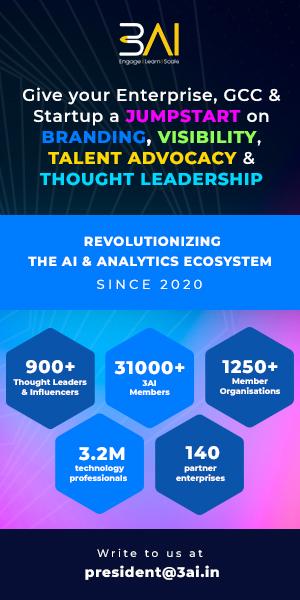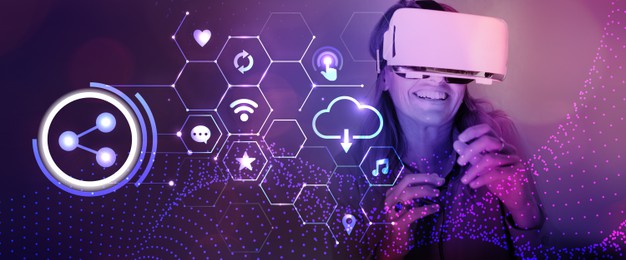How AI is altering Management Theories and Strategic Models?
3AI February 27, 2019

The advent of Artificial Intelligence in the corporate world is disrupting existing business processes and changing the way organizations are run. AI is fast becoming a cornerstone of how businesses manage their bottom line, while opening new revenue streams that could provide a boost to their toplines as well. Given the scale of its impact, there is no doubt that AI will also have a severe impact on the science that governs how organizations are run today.
I am obviously referring to incumbent management theories and models that govern modern organizational management. In classic terms, management theories are frameworks of wisdom which guide the decisions made by organizational leaders that have survived phenomenally well over the period of the modern enterprise. Sure, there have been reasons to fine-tune each one to the realities of each era and industry, but the core construct has been omnipresent through the years.
With AI’s entry into the mainstream of business, management theories may need to be re-evaluated and tweaked appropriately. While the core construct remains powerfully relevant, an injection of the new-age reality of AI will help managers and business leaders apply them in a more contemporary manner on a few theories and models that are being redefined by AI.
Porter’s Five Forces
The theory of the Five Competitive Forces put forth by Michael Porter in 1979 is one of the marquee and evergreen theories in management thought schools. Michael Porter suggests that organizations looking for an understanding of their competitor environment need to consider the impact from five perspectives and work on reducing the risks associated: 1) Threat of new entrants, 2) Threat of Substitutes, 3) Bargaining Power of Customers, 4) Bargaining Power of Suppliers and 5) Intra-industry Rivalry. The construct of this theory is that when businesses need to evaluate the competitiveness (or for that matter, the probability of success) in a business or an industry, they need to keep in consideration these five levers that determine an industry’s attractiveness.
With AI now entering the fray, it is time to reimagine our understanding of Porter’s theory. Specifically, when it comes to the threat of new entrants. Over the years, AI has levelled the playing field as a secret sauce, moving even the most established incumbents from their positions in traditional industries. One must look at how AI is fuelling Amazon’s massive growth – which has hugely disrupted the traditional retail industry. Amazon uses AI in a variety of ways – from identifying the next likely purchase to piloting drone-based deliveries. It was no surprise when Amazon’s announcement last year that it will be entering the healthcare industry led to a tumble in the share price of traditional healthcare companies. AI puts enterprises in a pole position and organizations that harness its’ power correctly stand to gain huge ground over those that do not.
Elton Mayo’s Human Relations Theory
Elton Mayo’s landmark research in the field of organizational productivity comes from his studies in the 1920s at Hawthorne plants in Chicago. In seeking to answer questions around how to improve human productivity, he and his assistants tried tinkering with multiple variables that might have an impact on the quality of the labour force’s work – such as light, duration of breaks and duration of working hours. After all these variables proved inconclusive on how to uplift worker productivity, Mayo finally hit upon his hypothesis i.e. giving attention to employees is what truly resulted in improved performances. Giving your workers a voice in the decision-making process, an experience of greater freedom and autonomy and considering the inherent social needs of people – is the most critical lever in the productivity puzzle.
Enter Artificial Intelligence. With AI taking away much of the scud work involved in managing the varied bureaucracies inherent in organizations, leaders will find a lot more time in managing the performance of its most valued asset – human talent. By simplifying routine and repetitive processes for leadership and the people, we can afford to pay much more attention to the well-being of our human talent, celebrate successes and course-correct flagging performances – with the much-needed human(e) touch.
Total Quality Management (TQM)
Many models and theories surround the overall framework for TQM (Total Quality Management) – a science that owes much of its early evolution to manufacturing techniques originating in Japan. At its very essence, TQM is the science that governs the quality in the manufacturing process. It relates to the adherence of manufactured products with agreed specifications, evolved keeping in mind the needs of the end user. TQM bridges multiple concepts – from customer centricity, lowering the waste in manufacturing processes with a view to increasing the overall quality of the manufacturing output.
The theories surrounding this domain may also be due for a revamp. TQM has long been a data-driven process – relying heavily on a post-mortem understanding of evidence-based decision-making and process improvement. With AI in the picture, organizations can improve predictions around off-specified products earlier, leading to a quantum leap in manufacturing quality. AI is also helping improve the forecasting process, thus reducing the waste created through unused, unsold inventory. Similarly, AI will reduce the overhead associated with identifying anomalous manufacturing conditions and provision for predictive machine maintenance as well to keep up the quality standards in manufacturing activity.
The Future of Organizational Management
The defining case for AI to changing existing models and theories of management boils down to the need for creating a blended workforce comprising both humans and machines. Management science today is largely rooted in building more efficient and agile organizations for humans. In the future, humans and AI will work side-by-side to achieve shared organizational goals. This means that AI will help remove a lot of administrative work that often throttles the productivity of leaders – and allow them to direct their energies towards more complex, judgement driven work that requires them to think creatively. Intelligent machines will soon be considered by the workforce to be ‘colleagues’ and the evolution of management thought needs to account for policies and systems that make the most out of this hybrid workforce.
In conclusion, infusing AI will make business more human centric. Ironic as it may sound, putting AI in charge of the day-to-day, routinized activities will lead to more time for compassionate interactions between humans and unleash human creativity in a huge way. New management theories and models that emerge in the future will hence need to account for the impact of AI – and help organizations and their leaders understand how to navigate this new normal in business.






